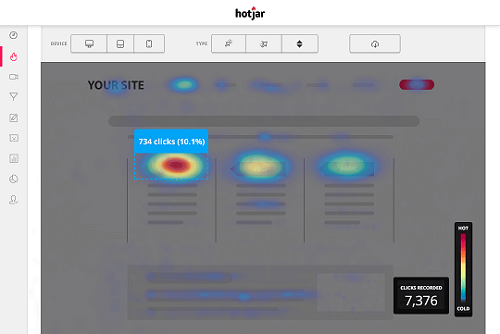Twitter Constant Struggles, New Partnerships and New Experiments
what the US media tries to spin as "mass uprisings against socialism" in Cuba VS the actual real-life mass socialist movement in Cuba that the US media will tell any lie to stop you from finding out about pic.twitter.com/oY8E8Aw7QC
— Rosa Astra (@morganastra) July 11, 2021
Earlier this month, several Twitter accounts that looked like they belonged to legitimate news organisations posted similar tweets claiming that an American journalist had been executed by members of the Taliban in Kabul:
| Source: Archive Today via PolitiFact |
The post above shows one of the fake BBC accounts tweeting about the man’s death in Kabul. Highlighting the problems in sharing information from accounts that are not verified.
PolitiFact analysed these sources and found that the supposedly executed man’s name had popped up in searches dating back to August 2020. He was previously reported to be a possible victim of the fuel explosion in Lebanon. Both accounts, along with the man himself, proved to be entirely fictional. The accounts responsible for manufacturing the story have been suspended.
While Twitter has been known to flag up, remove and dilute the visibility of problematic tweets, demonstrated throughout the presidential election. Many tweets by former President Donald Trump failed to meet the community guidelines. In an effort to cancel out fraudulent information with correct information, Twitter would often embed a hyperlink below to redirect users to informed sources.
| Source: The Yucatan Times |
According to Social Media Today, changes to Twitter’s labelling system are underway. Twitter is in the testing process for a three-tier process in an effort to reduce the spread of misinformation. The labelling features will be split into three alerts: Get the Latest, Stay Informed, and Misleading. The first to accommodate fast-changing news reports, with links to find out the newest information. The second relating to evolving and ongoing news stories, for example, COVID-19, where links to key authorities will be embedded in case information is not 100% accurate. Misleading will be applied to disinformation to warn readers that tweets are deliberately fallacious.
| Source: Social Media Today |
It is unclear yet how the misleading label will work in the long run, and whether it will make any difference to false information spreading on the platform. If people are still able to interact with the tweet and even see the tweet then the misinformation, even if addressed, still exists on the site. Another problem with Twitter’s labelling system, in general, is that they don’t seem to have much impact on narratives from key figures. On many occasions, fake news can travel faster than legitimate news, and Donald Trump is a notable case study of this problem on social media. CNBC covered the story in January this year and claimed that, in fact, the election falsehoods stated by Trump became his most popular tweets. It is difficult for the public to put their trust in social media, with worries that platforms are never fully politically impartial, and that being politically neutral is more of an illusion than a reality. Whether those views and perceptions of social media platforms have a substantial basis is unclear.
| Source: CNBC |
As annotated by CNBC the extent of how fake news can be interacted with and shared is troubling, and it is becoming increasingly clear that information on social media, particularly news, is becoming increasingly difficult to trust.
With fake news becoming much more of an obvious problem, particularly during COVID-19, many platforms have had to do their bit to manage the spread of misinformation and disinformation. So, is this a problem isolated from Twitter’s platform? Not at all: Facebook, Instagram, YouTube, and many other social media hubs that have reported problems surrounding false information. The Conversation reports that problems platforms face, in terms of mass amounts of misinformation being readily available, is partly due to organisations being able to easily manipulate algorithms.
The main obstacle with Twitter is, however, being able to report tweets with inaccurate information. Six days ago, Twitter may have come up with a solution: allowing users in certain regions to flag up fallacious tweets in an attempt to tackle false information circulating on the site. CNET Daily News has stated some users in the US, South Korea, and Australia will be able to report a tweet as misleading. This change to the platform seems to be operating on a trial basis, and when or if the option will become available in other regions is yet to be clarified.
At the start of August. Twitter also confirmed that it will partner with Associated Press and Reuters, its partnership with news organisations is another strategy to try and stop the spread of misinformation on the platform. This collaboration will allow information to be fact-checked much faster than normal by analysing information and provide an accurate context to information that is shared.
As part of Twitter efforts, Twitter has started a new experiment a few weeks ago. Australian Twitter users now are able to report misleading content by flagging tweets that seem fake or inaccurate, via a new option on the platform’s content reporting mechanism.
The option to report misleading content is being trialed in three countries – the US, South Korea and Australia. This trial will allow Twitter to gather data and assess whether user reporting can usefully inform attempts to identify and curb misinformation in real-time.
However, in fairness to the Twitter team, updates to their policy guidance over the misinformation associated with COVID-19 have helped to restore some faith that these matters are taken seriously. If you are concerned that information is misleading or dangerous you can report tweets as harmful or abusive which often requires users to give further information. While directly reporting tweets as misinformation is not an available feature in most countries at the time being, at least there is some comfort that there are ways to share your concerns with the platform even by just sending a message to @twittersupport and sharing your concerns.
Related Articles:
Twitter to allow 3 countries to flag misinformation
“Climate Change Disinformation Is Spreading Rapidly” on Facebook
Facebook, Twitter And TikTok Tackle Aggressively The Spread Of Covid-19 MisinformationStephanie Brown
Writer and critic with experience in film journalism. I am a drama graduate with a great interest in media, the arts, and cultural research.
Twitter: @stephpbrown_
LinkedIn: /in/stephanie-brown-4259011b7
 Reviewed by Steph
on
Tuesday, September 21, 2021
Rating:
Reviewed by Steph
on
Tuesday, September 21, 2021
Rating:















 Entrepreneur, international speaker on Social Media Marketing. First one in the UK to write and speak in conferences about Twitter as a marketing tool. Consultant to Corporate Companies, Government Organizations, Marketing Managers and Business Owners.
Entrepreneur, international speaker on Social Media Marketing. First one in the UK to write and speak in conferences about Twitter as a marketing tool. Consultant to Corporate Companies, Government Organizations, Marketing Managers and Business Owners. Aspiring novelist with a passion for fantasy and crime thrillers. He hopes to one day drop that 'aspiring' prefix. He started as a writer and soon after he was made Executive Editor and Manager of the team at Social Songbird. A position he held for 5 years.
Aspiring novelist with a passion for fantasy and crime thrillers. He hopes to one day drop that 'aspiring' prefix. He started as a writer and soon after he was made Executive Editor and Manager of the team at Social Songbird. A position he held for 5 years. Musician, audio technician, professional tutor and a Cambridge university English student. Interested in writing, politics and obsessed with reading.
Musician, audio technician, professional tutor and a Cambridge university English student. Interested in writing, politics and obsessed with reading. Recently graduated with a BA in English Literature from the University of Exeter, and he is about to study an MA in Journalism at the University of Sheffield. He is an aspiring journalist and novelist; in his free time he enjoys playing chess, listening to music and taking long walks through nature.
Recently graduated with a BA in English Literature from the University of Exeter, and he is about to study an MA in Journalism at the University of Sheffield. He is an aspiring journalist and novelist; in his free time he enjoys playing chess, listening to music and taking long walks through nature. Lucy is an undergraduate BSc Politics and International Relations student at the London School of Economics and Political Science.
Lucy is an undergraduate BSc Politics and International Relations student at the London School of Economics and Political Science. Anna Coopey is a 4th year UG student in Classics at the University of St Andrews in Scotland. She is a keen writer and researcher on a number of topics, varying from Modern Greek literature to revolutionary theory.
Anna Coopey is a 4th year UG student in Classics at the University of St Andrews in Scotland. She is a keen writer and researcher on a number of topics, varying from Modern Greek literature to revolutionary theory.
